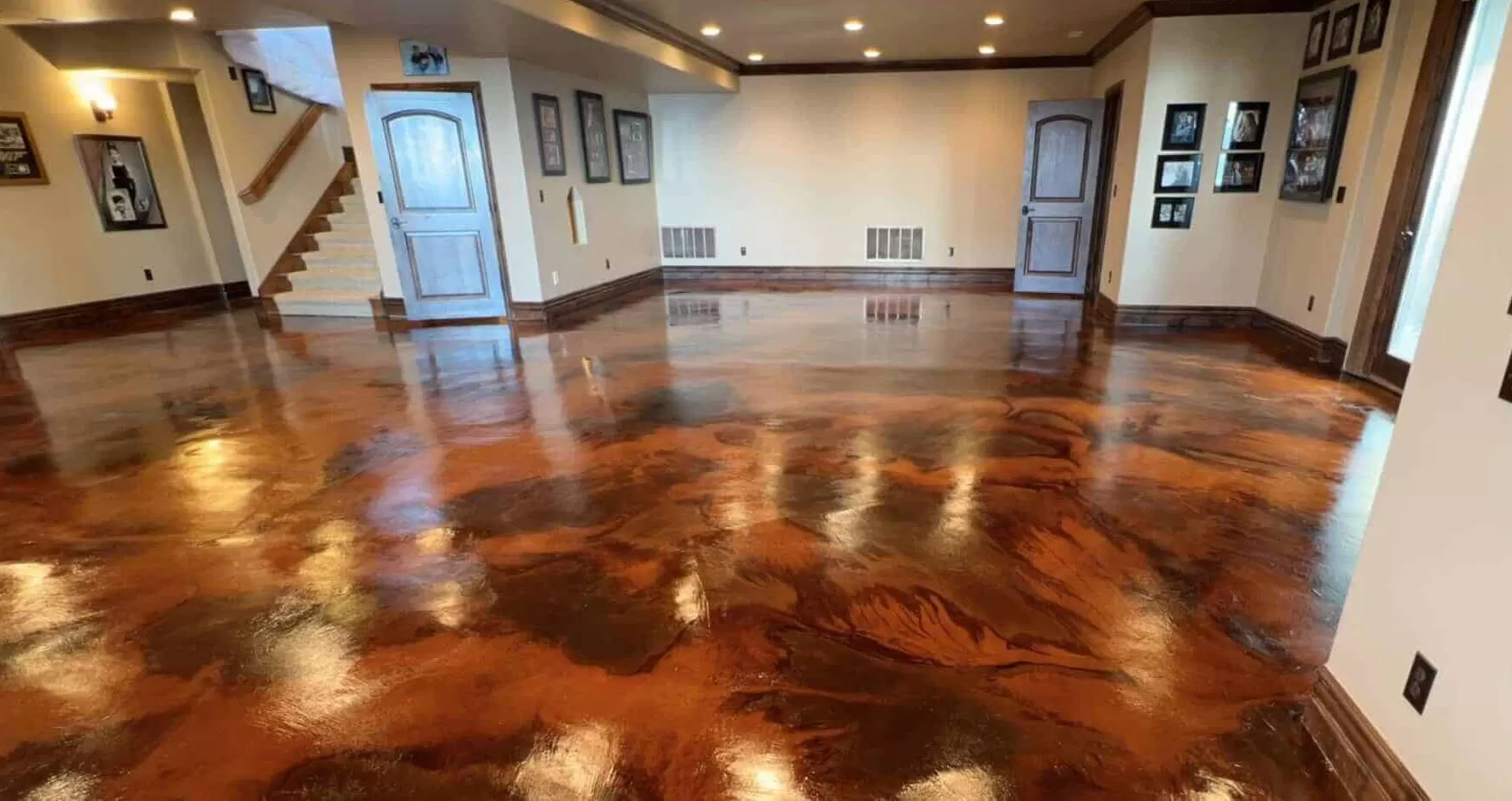
Acid Stained Overlay
Acid Stained Overlay Acid Staining a basement floor can be really exciting – and very unpredictable! Each and every acid-stained piece of concrete is unique
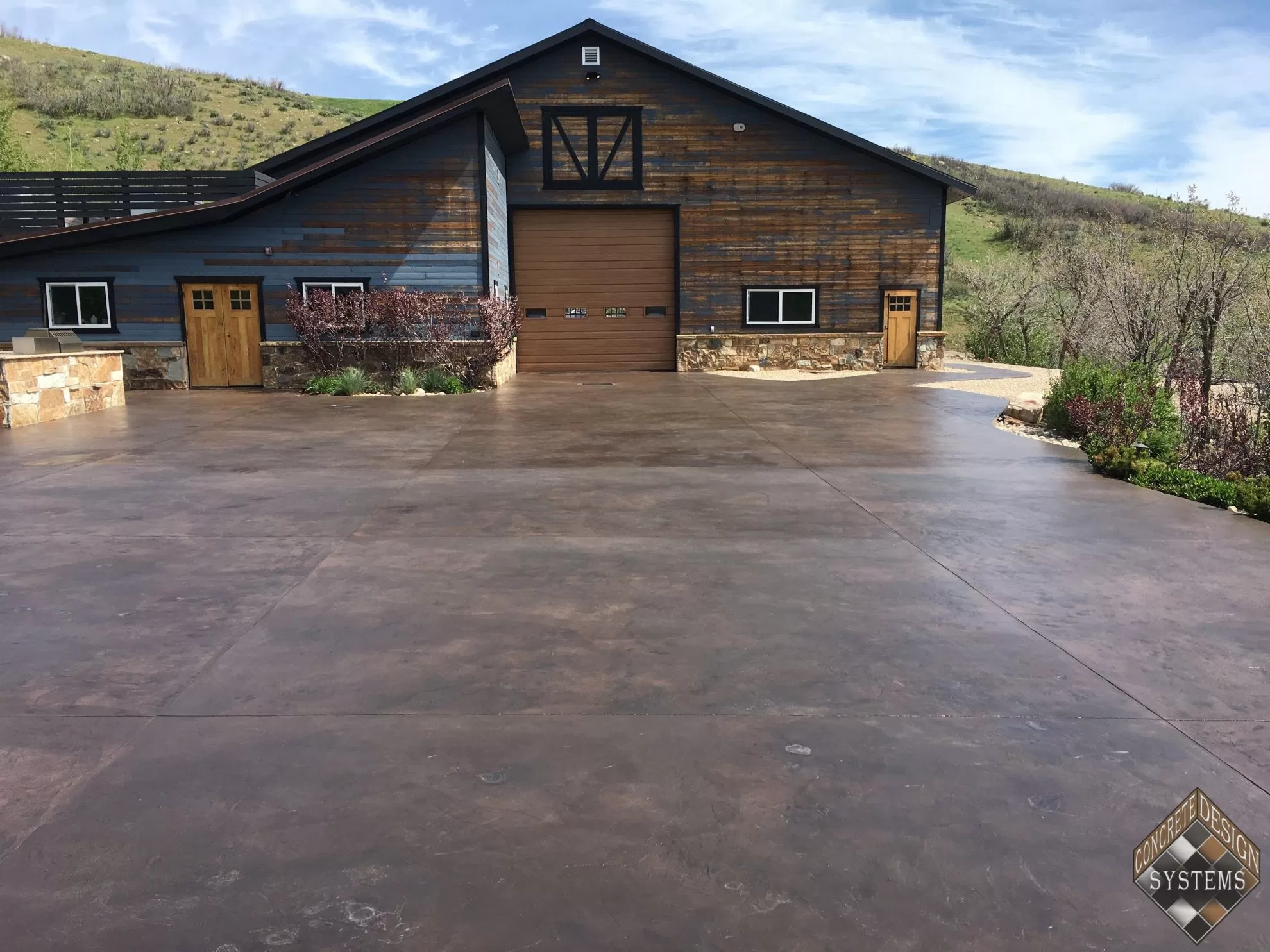
Renewed stamped colored concrete can be very “touchy” when poured, stamped, and finished all within a very short period of time. Concrete is a Heat-Reaction product and has a short window to work with it before it “Flashes”( gets hard ). It requires very careful planning to orchestrate such a project and is a very high-stress installation, to say the least. The volatility is extremely high and must be treated with intense focus very quickly!
Given those conditions, one can only imagine what it must be like to pour several thousand square feet of concrete at one time and have it all laid out, leveled, tooled, floated, troweled, stamped, and released all within a few short hours. As such, the concrete must be handled with lots of TLC in order for successful end results – and long term.
There are many factors that come into play with the placement of concrete:
1. Weather. Because concrete is a water-based product it is critical that there is no rain, snow, hail, sleet or strong winds the day and hour of the pour.
2. Temperatures. Here again, because concrete is a water-based product it is paramount that it does not get frozen.
3. Wind and Debris. Concrete can hydrate too quickly if there are windy conditions. This can cause shrinkage cracking and dirt and debris can affect the overall finish.
With this broad overview of the placement of concrete and the volatility associated with it, things can go wrong quickly and suddenly the tide can be turned against the installers in the blink of an eye.
For example, if the concrete is set up too quickly, it is the tendency of the applicators to “add water” to reconstitute the product to make it more “workable” to get the desired finish. When too much water is added after the fact, it weakens the finished surface and now it becomes susceptible to what is referred to as “Spalling”. This means that the first 1/4″ – 1/2″ of the concrete surface begins to delaminate from the aggregate base of the concrete mixture and pops off in tiny circles, leaving the larger aggregate exposed underneath.
In this video, you will observe the results of this “spalling” process in a very significant way. You will see how this is to be dealt with in order to salvage such a disaster! The restoration of any concrete has to be qualified prior to attempting to repair it. It must be determined to be structurally sound before any efforts are worth the time to renew the damaged surface. Qualifying this structurally sound condition takes years of experience to know what things to look for. That in itself is a whole new topic and discussion.
For purposes of keeping the subject short and to the point, we will demonstrate via the video how this restoration process of damaged renewed stamped colored concrete is to be done.
If you have stamped concrete that you would like to see if it’s possible to repair, salvage, or renew, give us a call here at Concrete Design Systems for a Free estimate today! Call us today at (801)376-5143
or fill out our free estimate form…

Acid Stained Overlay Acid Staining a basement floor can be really exciting – and very unpredictable! Each and every acid-stained piece of concrete is unique
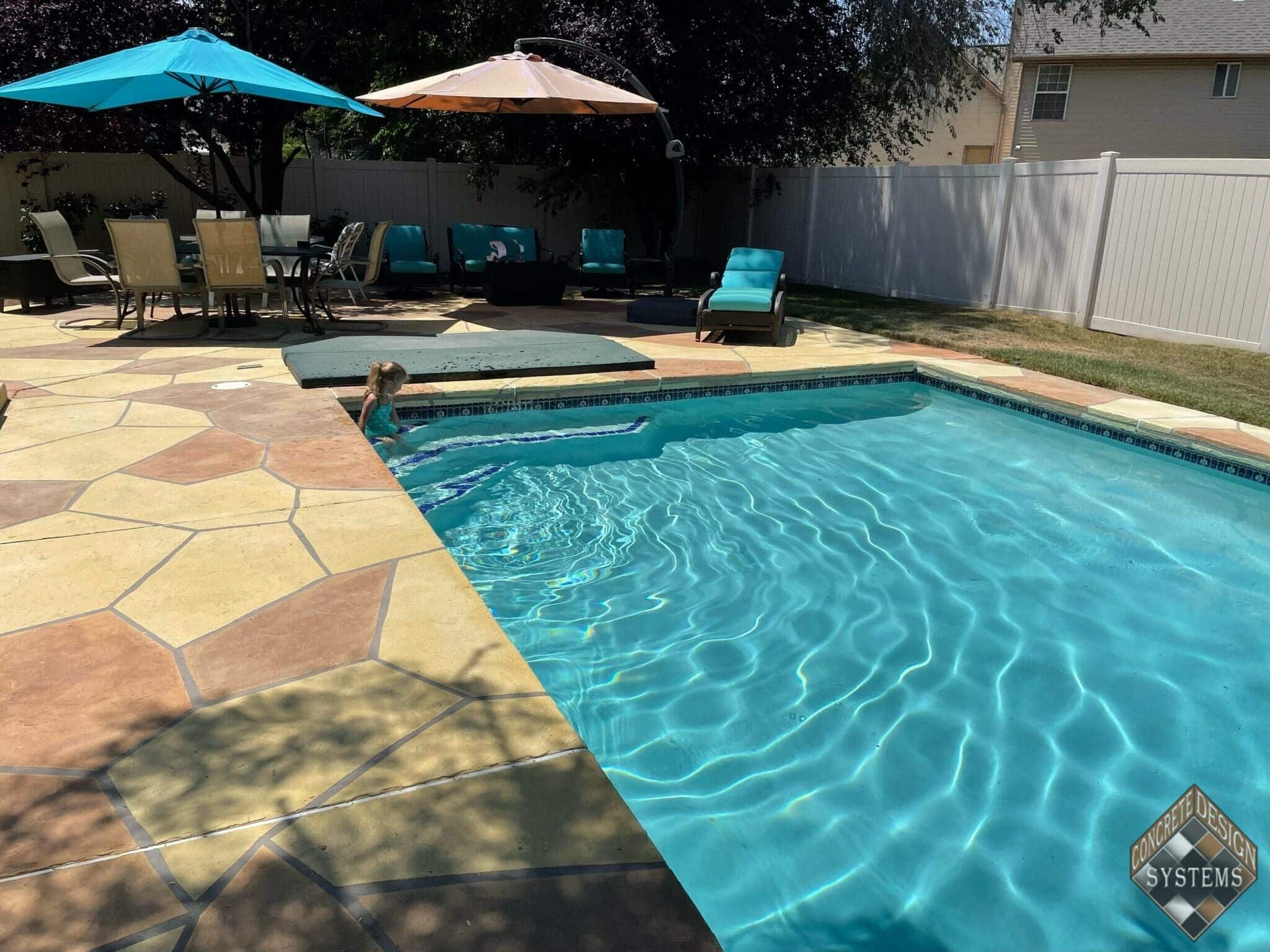
Natural Stone Overlay Natural Stone designs are some of the funnest creations that Concrete Design Systems will do throughout the season. Pool decks are the
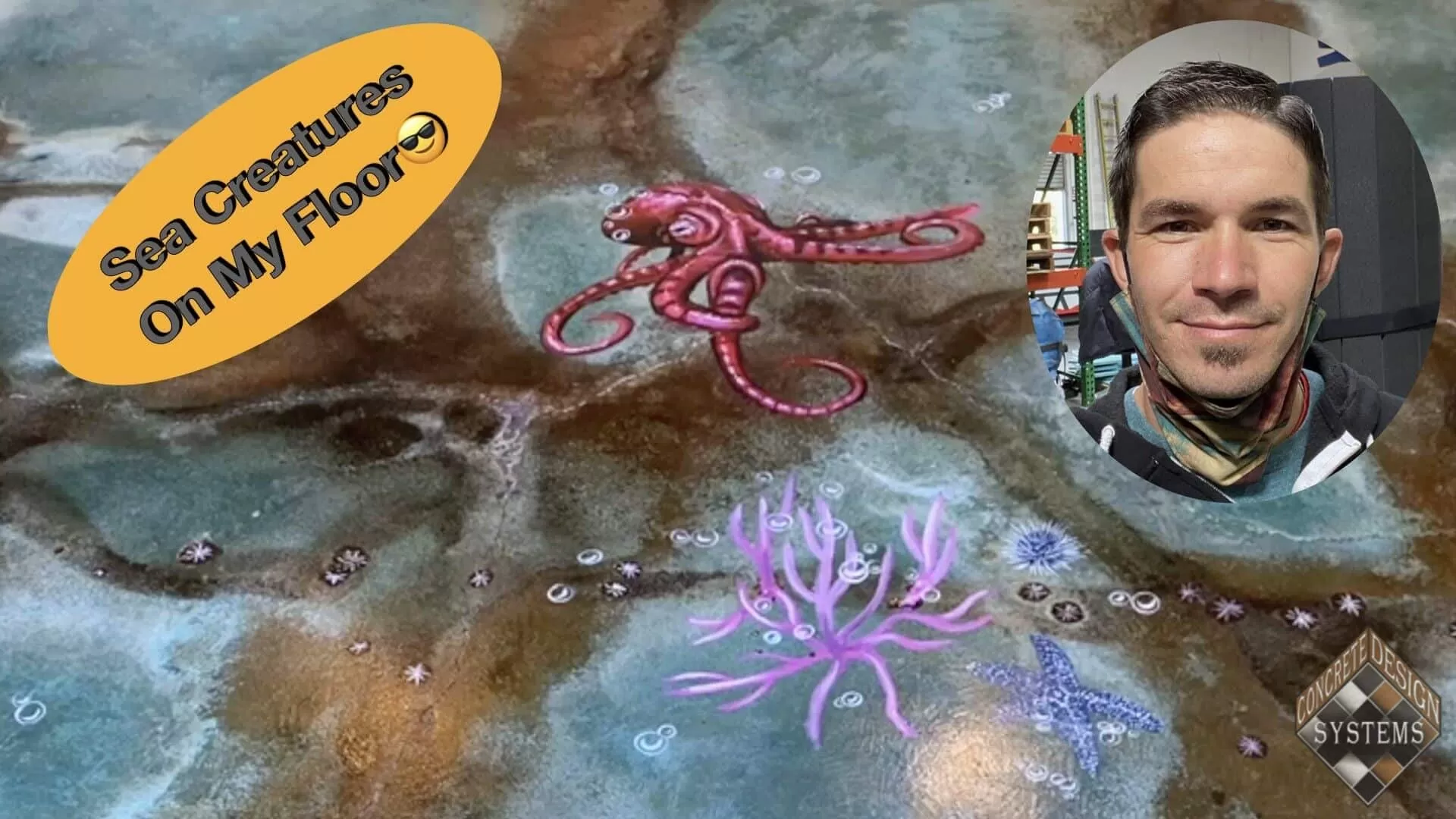
Adding Art Work To Your Acid Stained Concrete! Adding artwork to your acid-stained concrete surface helps one to see the possibilities of thinking “outside the
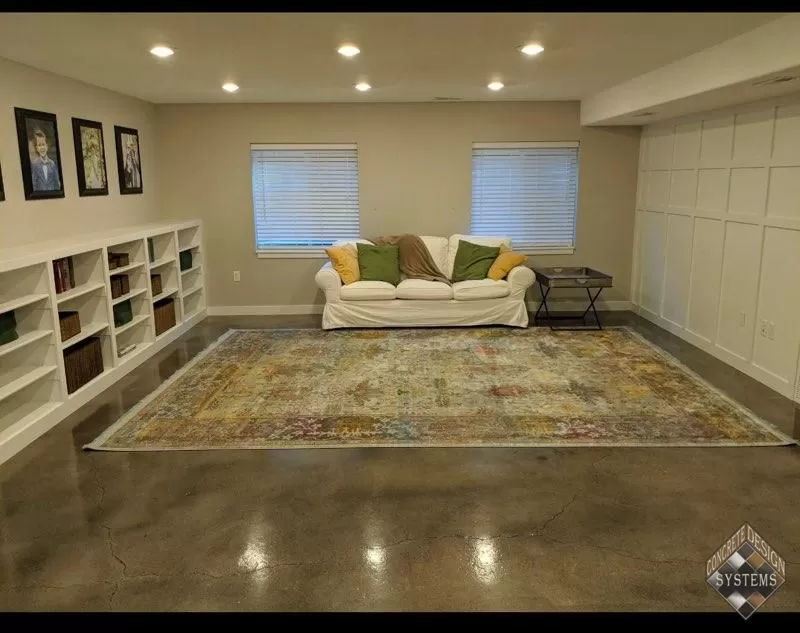
Pigmented Color Staining Pigmented Color Staining is an excellent way to add some dimension and beauty to a concrete surface, as opposed to the traditional
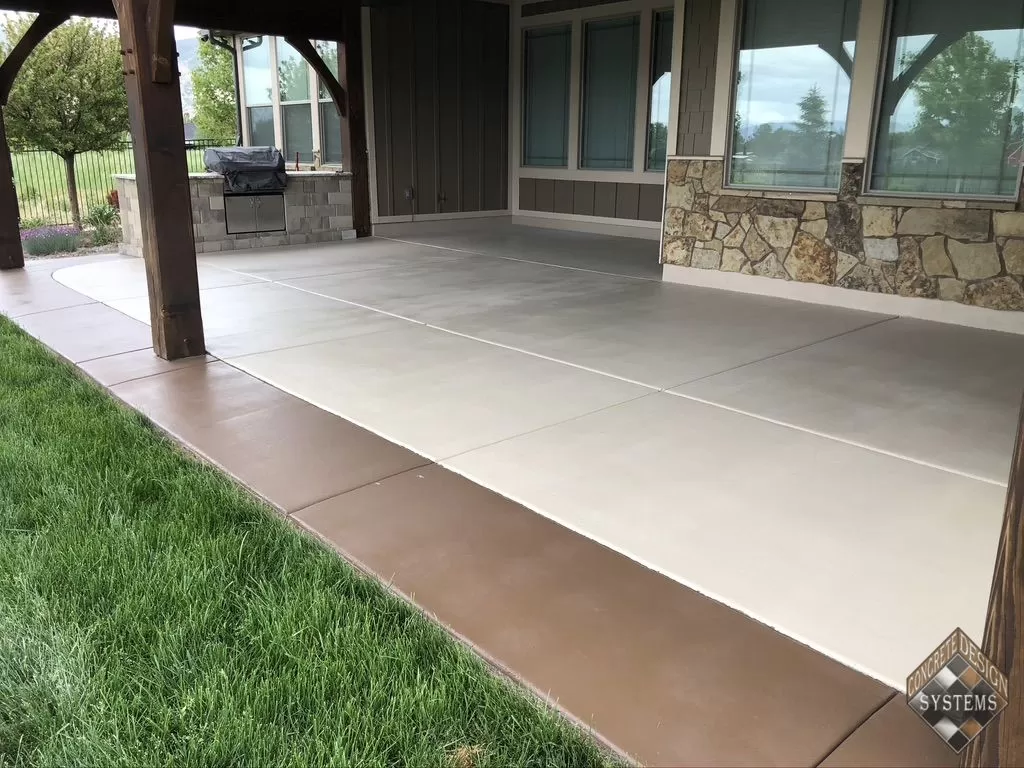
Multi-Colored Solid Color Staining Applying a high-grade, high-quality Multi-Colored Solid Color Stain urethane over concrete surfaces – is yet another option to update and enhance
CDS now offers DIY Acid Staining, Epoxy Flooring and Resurfacing Courses. Learn how to renew and revitalize your concrete with the most practical, comprehensive courses. We will teach you everything you need to know to color your own concrete like a pro.